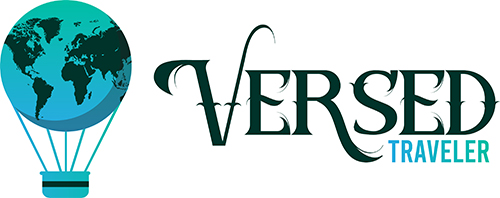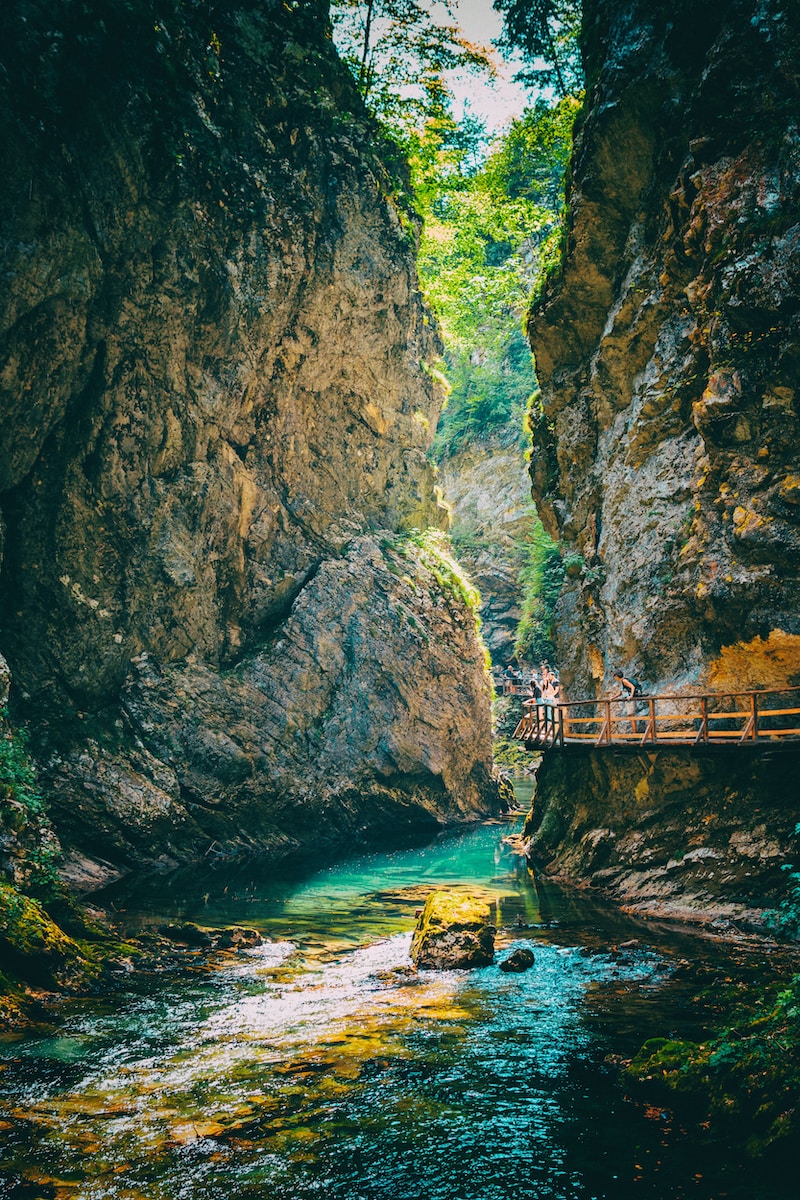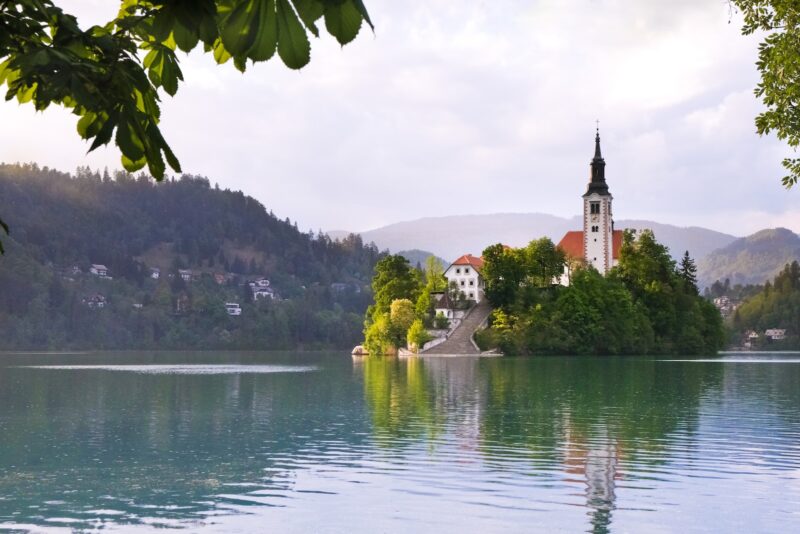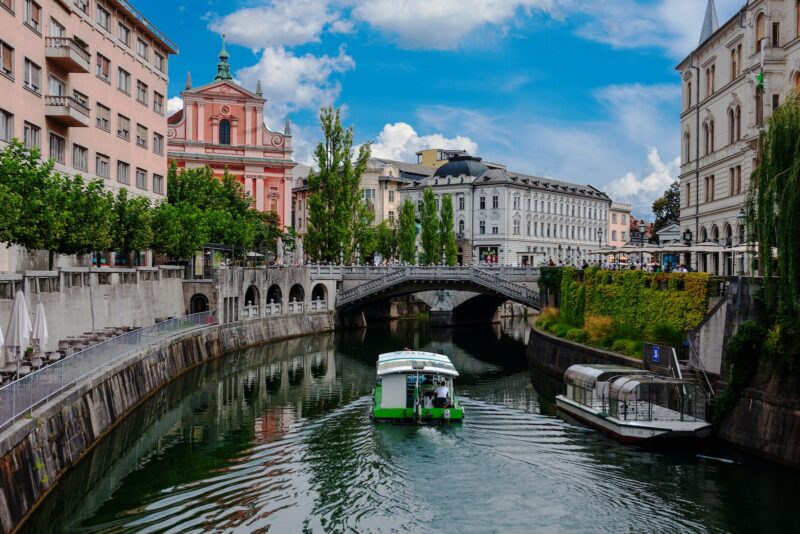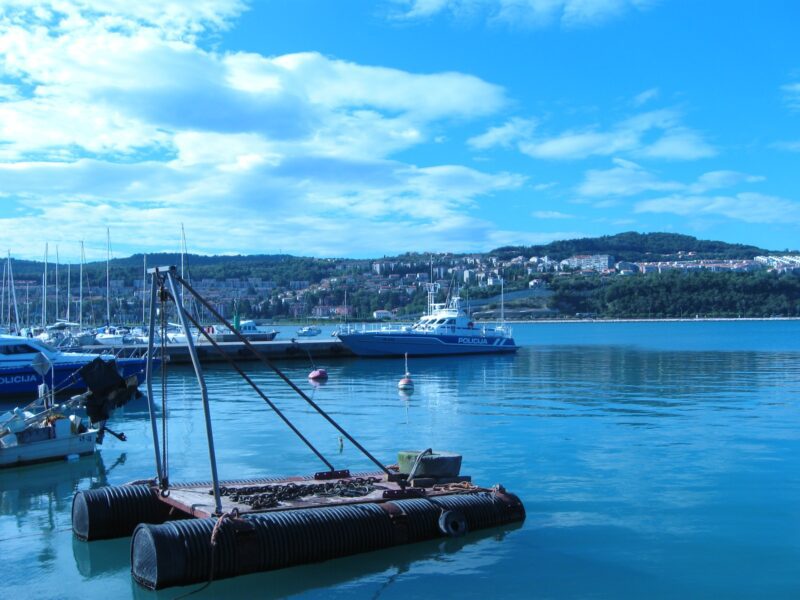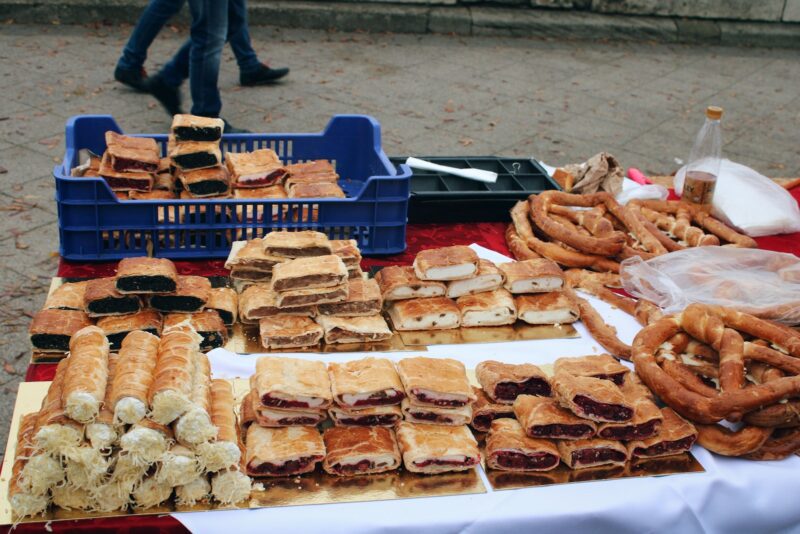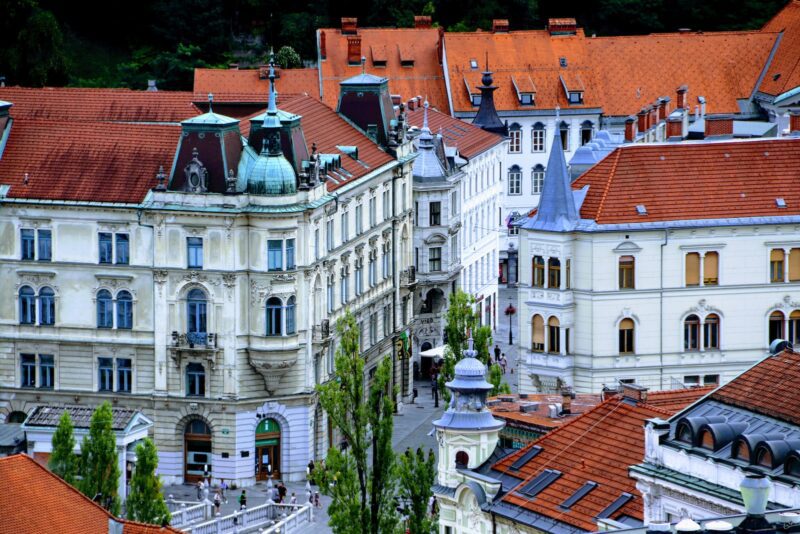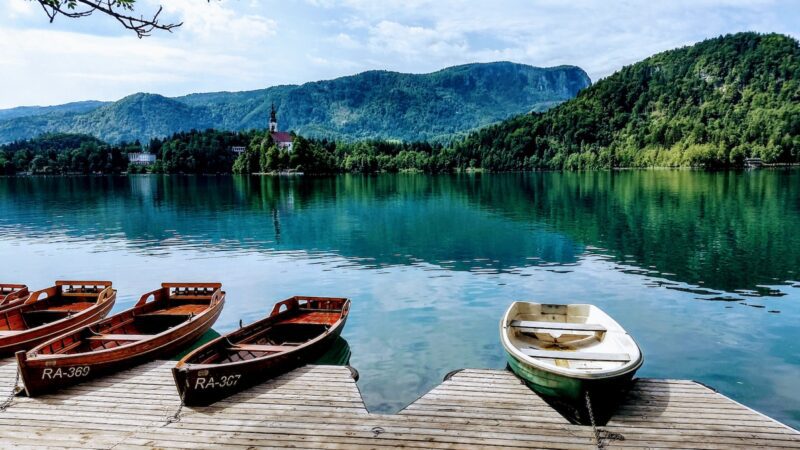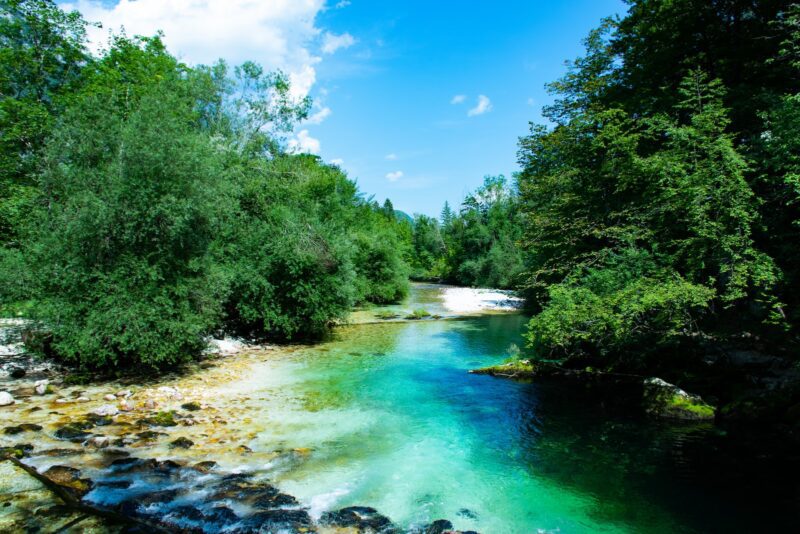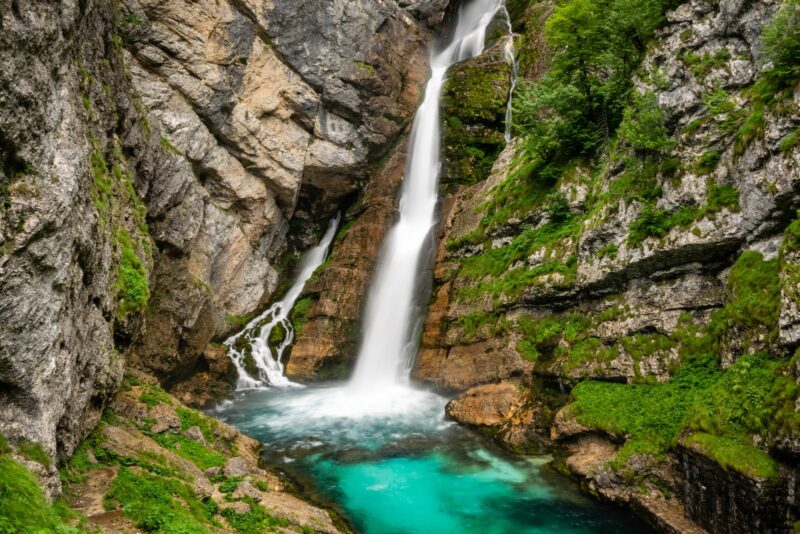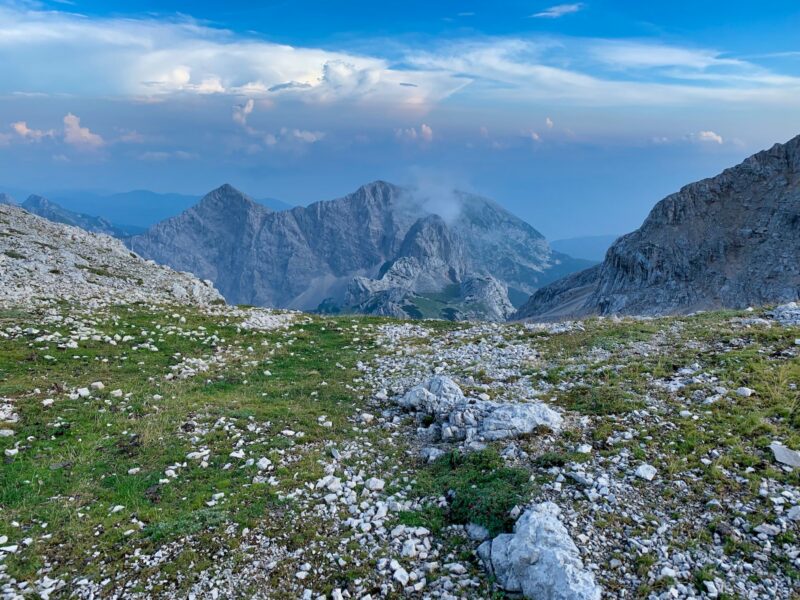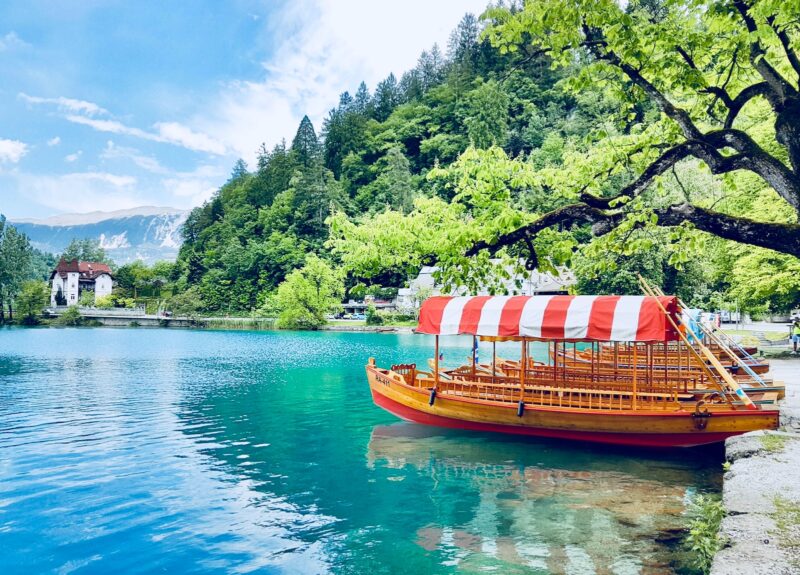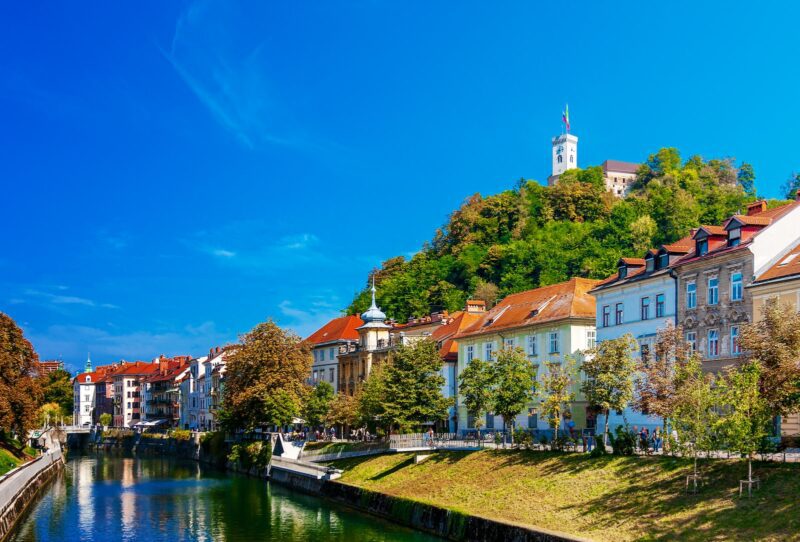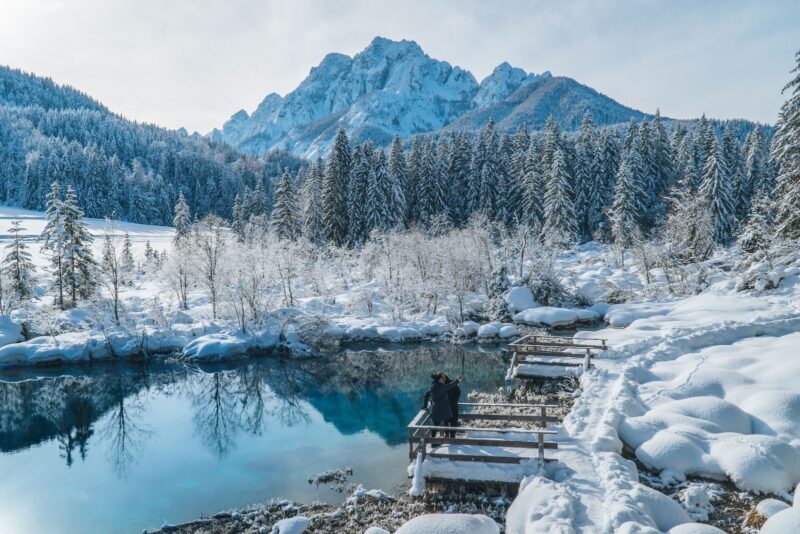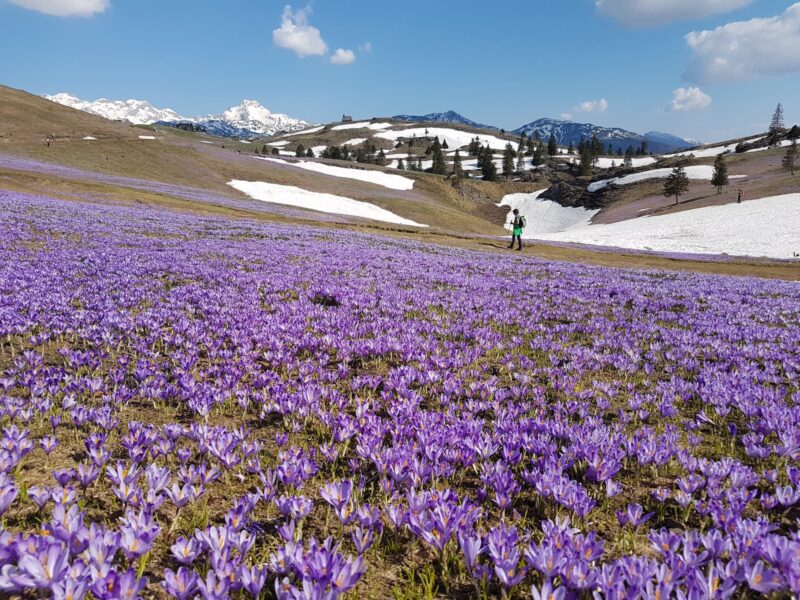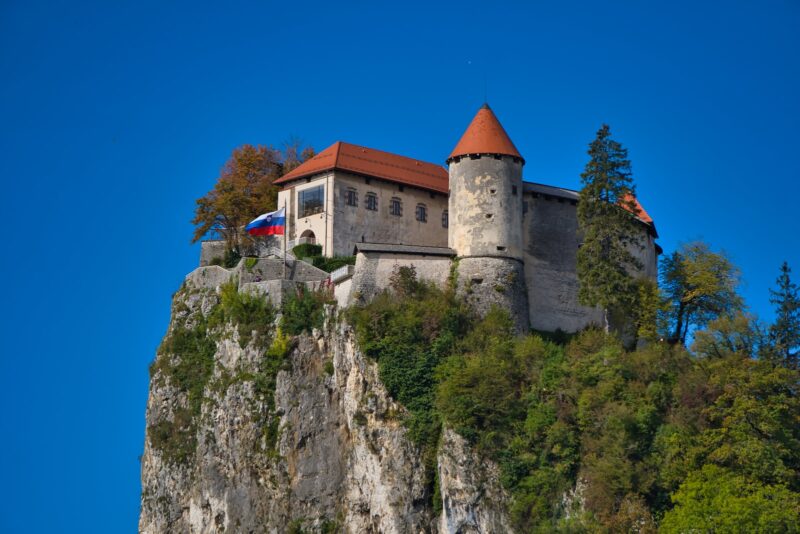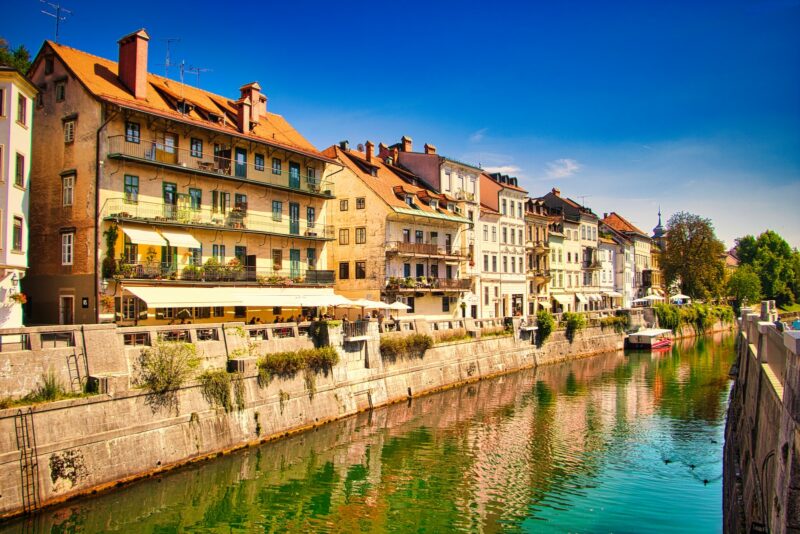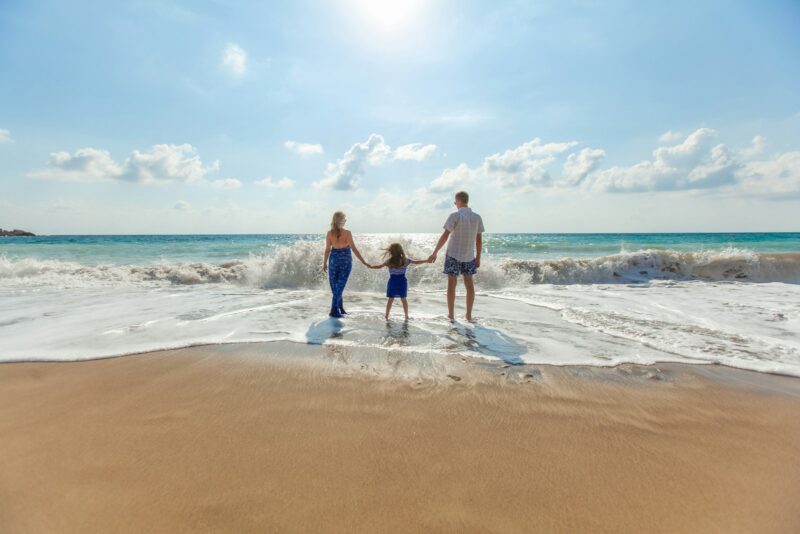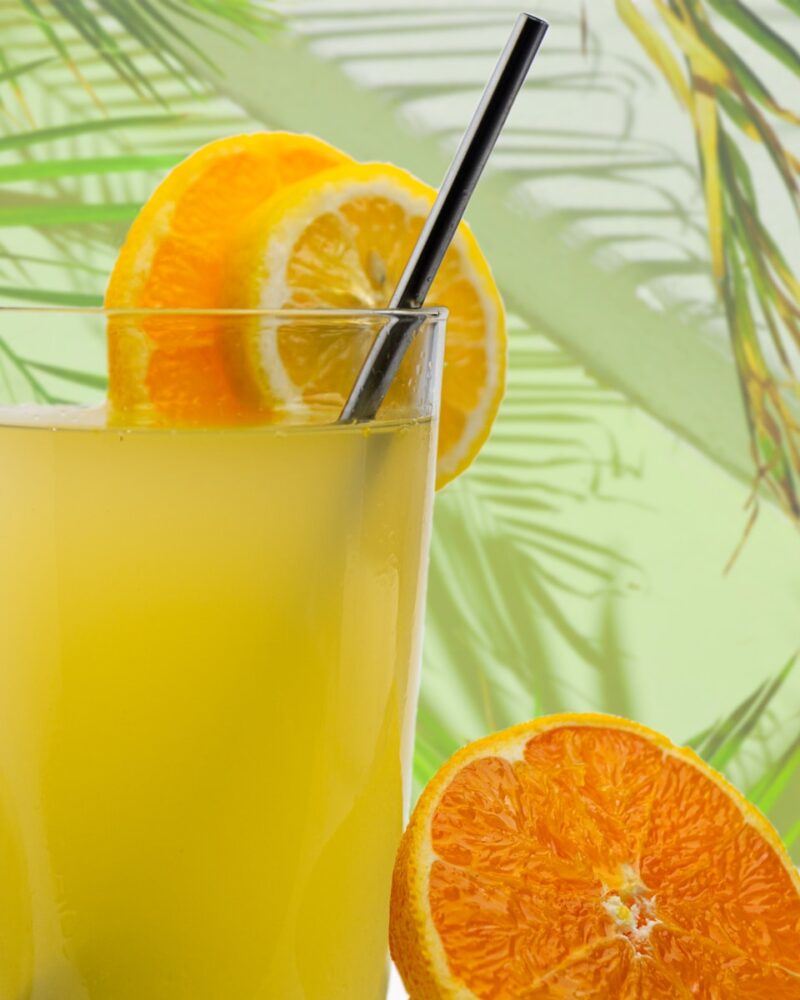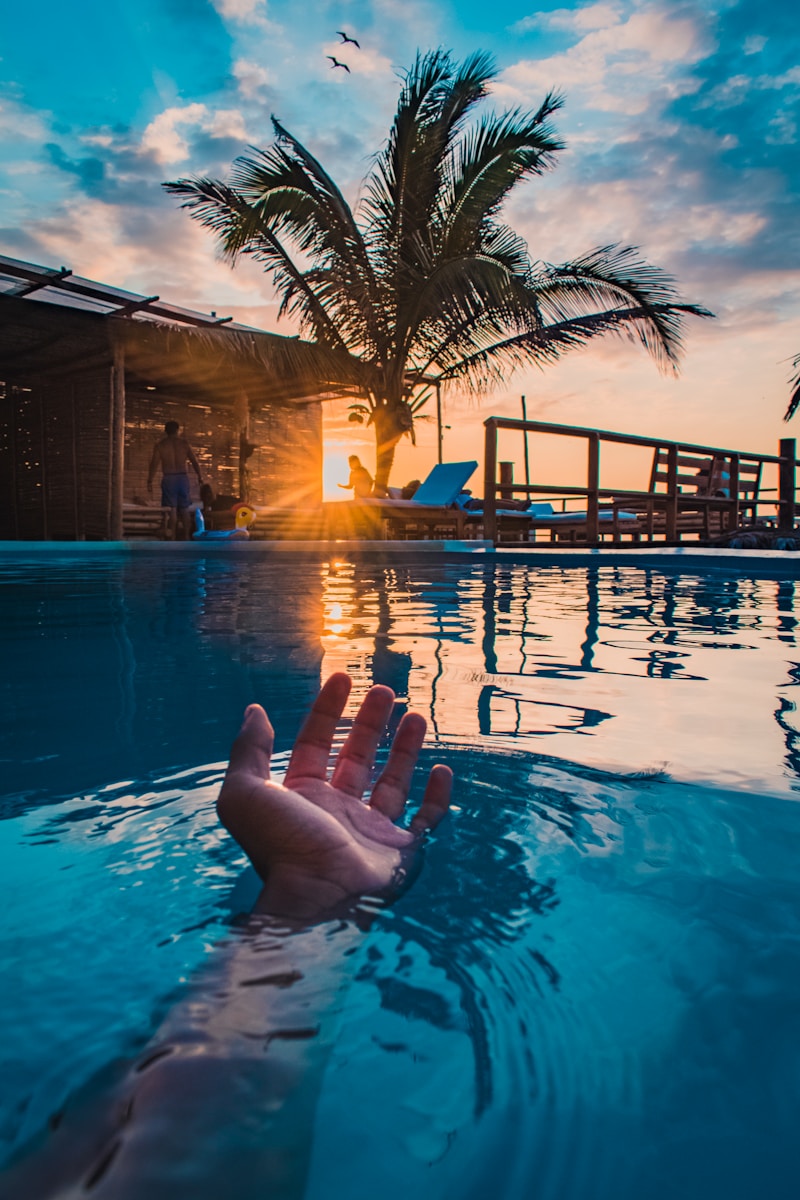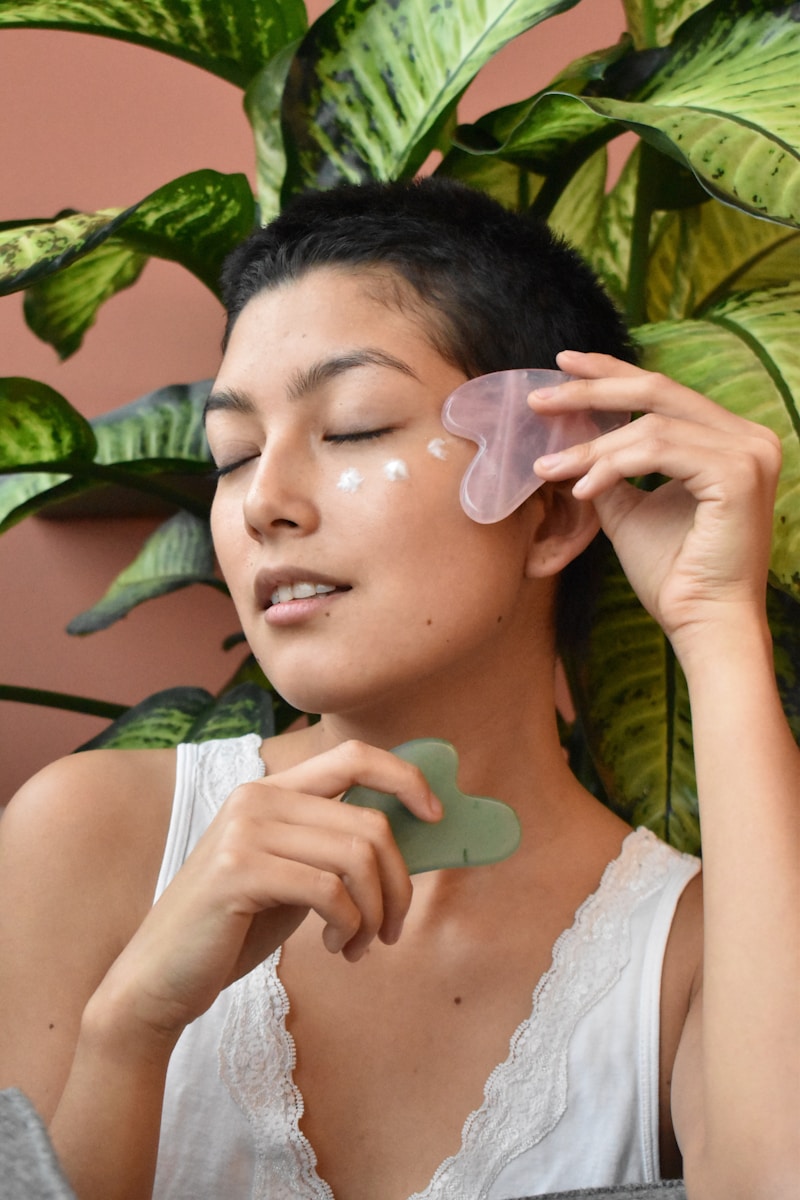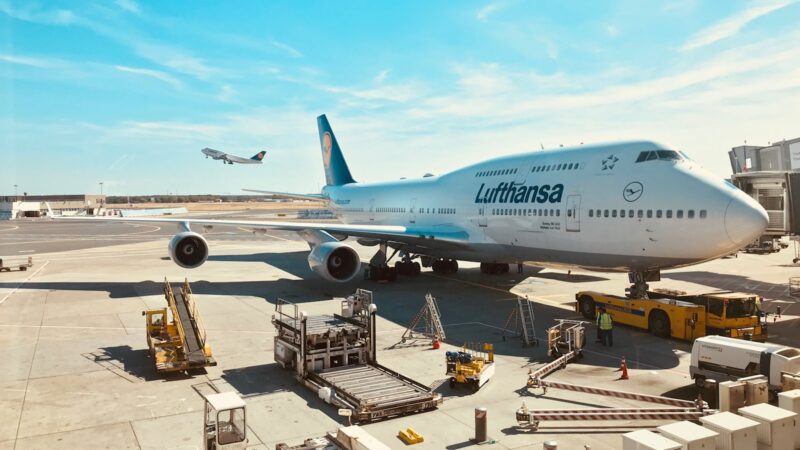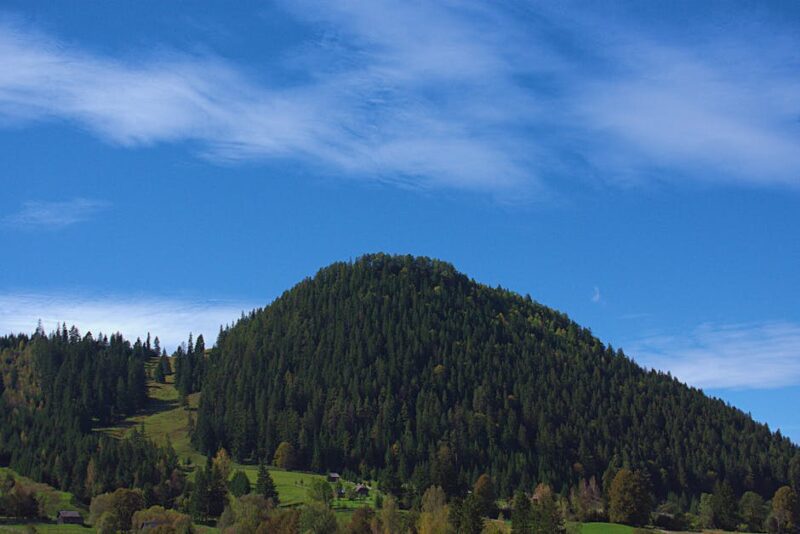Slovenia, a small European country, is often overlooked as a travel destination. With this Slovenia travel guide, you’ll learn about the country’s stunning natural landscapes, rich cultural heritage, and welcoming locals and realize Slovenia is a hidden gem waiting to be discovered. From its snow-capped peaks to its turquoise-green rivers and Venetian-style coastline, Slovenia offers a unique blend of natural beauty, charming rustic culture, and sophisticated cuisine that will delight any traveler.
A trip to Slovenia promises a one-of-a-kind experience that will leave you with unforgettable memories. Whether you’re a nature lover, a history buff, or a foodie, this Slovenia travel guide will prove there is something up your alley. From the charming capital city of Ljubljana, where you can wander around the old town and gaze at the Baroque architecture, to the picturesque coastal town of Piran, where you can soak up the Mediterranean sun and enjoy fresh seafood, Slovenia is a destination that will capture your heart and leave you wanting more.
If find Slovenia enchanting, check out these 9 European castles you should definitely visit.
Table of Contents
ToggleSlovenia Travel Guide: Geography
Slovenia is a small country bordered by Italy to the west, Austria to the north, Hungary to the northeast, and Croatia to the south and southeast. It covers an area of approximately 20,273 square kilometers, making it one of the smallest countries in the European Union. Despite its small size, Slovenia has a diverse geography, with four distinct regions: the Julian Alps, the Mediterranean Coast, the Pannonian Plain, and the Dinaric Mountains.
The Julian Alps, located in the northwestern part of the country, are part of the Southern Limestone Alps and are characterized by their high peaks, deep valleys, and glacial lakes. The highest peak in Slovenia, Mount Triglav, is located in the Julian Alps and stands at 2,864 meters. The area is popular among hikers, mountaineers, and skiers.
The Mediterranean Coast, located in the southwestern part of the country, stretches for 46.6 kilometers along the Adriatic Sea. The area is known for its picturesque towns, beaches, and historic sites. The countryside is dotted with olive groves, vineyards, and citrus orchards.
The Pannonian Plain, located in the northeastern part of the country, is a flat area that extends into Hungary and Austria. The area is known for its agricultural production, particularly for wheat, corn, and sunflowers. The region is also home to several thermal spas.
The Dinaric Mountains, located in the southeastern part of the country, are characterized by their rugged terrain and deep gorges. The area is popular among hikers and rock climbers. The region is also home to several karst caves and underground rivers.
Overall, Slovenia’s diverse geography offers visitors a range of landscapes to explore, from the high peaks of the Julian Alps to the Mediterranean Coast and the rolling hills of the Pannonian Plain.
Slovenia Travel Guide: Major Cities
Slovenia is a small country with a population of just over 2 million people. Despite its size, it has a number of charming cities that are worth visiting. Here are three of the major cities in Slovenia that are definitely worth exploring:
Ljubljana
Ljubljana is the capital of Slovenia and is often described as one of Europe’s most charming cities. It is a small city with a population of around 300,000 people, but it has a lot to offer visitors. The city is known for its beautiful architecture, green spaces, and lively cultural scene.
One of the best things to do in Ljubljana is to take a walk around the old town. The old town is full of narrow streets, beautiful buildings, and interesting shops. Visitors can also take a stroll along the Ljubljanica River, which runs through the city. There are plenty of cafes and restaurants along the river, making it a great place to relax and enjoy the scenery.
Maribor
Maribor is the second-largest city in Slovenia and is located in the northeastern part of the country. It is known for its wine, as it is located in the heart of Slovenia’s wine region. Visitors can take a tour of the local vineyards and wineries and sample some of the region’s best wines.
In addition to its wine, Maribor is also known for its historic old town. The old town features narrow streets, beautiful churches, and interesting museums. Visitors can also take a stroll along the Drava River, which runs through the city.
Koper
Koper is a small coastal city located in southwestern Slovenia. It is known for its beautiful beaches, historic old town, and lively cultural scene. Visitors can take a stroll around the old town, which features narrow streets, beautiful buildings, and interesting shops.
One of the best things to do in Koper is to visit the city’s beaches. The beaches in Koper are known for their clear blue waters and pristine sand. Visitors can also take a boat tour of the nearby coastline and explore some of the region’s hidden coves and bays.
Slovenia Travel Guide: Culture and People
Slovenia is a country with a rich cultural heritage, and its people are proud of their Slavic roots. The Slovenian language is a Slavic language that is closely related to Croatian and Serbian. The country’s culture is heavily influenced by its neighboring countries, including Italy, Austria, and Hungary. The locals are warm and friendly, and they are always eager to share their culture with visitors.
One of the most important aspects of Slovenian culture is its cuisine. The country’s food is heavily influenced by its neighbors, and it features a wide range of dishes that are both delicious and unique. Some of the most popular dishes include goulash, strudel, and sauerkraut. Slovenian wine is also highly regarded, and the country is home to many excellent vineyards.
Slovenia is also known for its traditional folk music and dance. The country has a rich musical heritage, and its traditional music is characterized by the use of instruments such as the accordion, the fiddle, and the zither. Traditional Slovenian dances are lively and energetic, and they are often performed at festivals and other cultural events.
The Slovenian people are proud of their culture, and they are always eager to share it with visitors. Whether you are interested in trying traditional Slovenian cuisine, learning about the country’s music and dance traditions, or simply meeting some friendly locals, Slovenia is a great destination for cultural exploration.
Slovenia Travel Guide: Historical Sites
Slovenia is a country with a rich history, and there are several historical sites worth visiting. Here are some of the most notable ones:
Ljubljana Castle
Ljubljana Castle is a medieval fortress that stands on a hill overlooking the city of Ljubljana. The castle dates back to the 12th century and has played an important role in the city’s history. It was used as a military stronghold, a prison, and a royal residence. Today, the castle is a popular tourist attraction, and visitors can explore the castle’s many rooms and exhibits, as well as enjoy stunning views of the city from the castle’s ramparts.
Predjama Castle
Predjama Castle is a unique castle located in the village of Predjama. The castle is built into a cave and is perched on a cliff, making it one of the most unusual castles in Europe. The castle dates back to the 13th century and has a long and fascinating history. It was the home of a famous knight, Erazem Lueger, who was known for his rebellious spirit and daring exploits. Today, visitors can explore the castle’s many rooms and learn about its history through exhibits and guided tours.
Old Town Ptuj
Old Town Ptuj is a charming medieval town located in northeastern Slovenia. The town is known for its well-preserved medieval architecture and its rich history. Visitors can explore the town’s many narrow streets and alleys, visit its many museums and galleries, and admire its many historic buildings and landmarks. One of the most notable landmarks in Old Town Ptuj is the Ptuj Castle, which dates back to the 12th century and is now home to a museum.
Slovenia Travel Guide: Natural Attractions
Slovenia is a country that boasts an abundance of natural beauty, from the stunning lakes to the majestic mountains and everything in between. Here are some of the top natural attractions that travelers should not miss when visiting Slovenia.
Lake Bled
Lake Bled is one of the most popular destinations in Slovenia and for good reason. This picturesque lake is surrounded by mountains and forests and features a charming island in the middle that can be visited by boat. Visitors can also take a stroll around the lake or hike up to Bled Castle for breathtaking views.
Lake Bohinj
Lake Bohinj is another stunning lake in Slovenia that is less crowded than Lake Bled but equally as beautiful. This glacial lake is surrounded by the Julian Alps and offers visitors the opportunity to swim, kayak, or simply relax on the beach.
Triglav National Park
Triglav National Park is a must-visit destination for nature lovers. This park is home to the highest peak in Slovenia, Mount Triglav, as well as numerous other peaks, valleys, and rivers. Visitors can hike, bike, or climb their way through the park to experience its natural beauty.
Soča Valley
The Soča Valley is known for its crystal clear emerald green river that winds its way through the valley. This area is perfect for outdoor enthusiasts who enjoy activities like rafting, kayaking, and canyoning.
Vintgar Gorge
Vintgar Gorge is a natural wonder that is not to be missed. This gorge is located near Lake Bled and features a wooden walkway that winds its way through the gorge, allowing visitors to experience the stunning waterfalls and pools up close.
Overall, Slovenia is a country that is rich in natural beauty and travelers should take the time to explore its many natural attractions.
Slovenia Travel Guide: Outdoor Activities
Slovenia is a paradise for outdoor enthusiasts. With its diverse landscape, Slovenia offers a wide range of outdoor activities for all ages and fitness levels. From hiking in the Julian Alps to kayaking down the emerald-green Soča River to skiing in the snow-capped mountains, there are plenty of options.
Hiking
Hiking is one of the most popular outdoor activities in Slovenia. The country boasts an extensive network of hiking trails, ranging from easy walks to challenging multi-day treks. The Julian Alps, with their rugged peaks and crystal-clear lakes, are a hiker’s paradise. The Triglav National Park, located in the heart of the Julian Alps, offers some of the most spectacular hiking trails in Slovenia. The park’s highest peak, Mount Triglav, is a must-visit for experienced hikers.
Click here to see our reviews of the best hiking boots for men
Cycling
Cycling is another popular outdoor activity in Slovenia. The country has a well-developed network of cycling trails, ranging from easy family-friendly routes to challenging mountain bike trails. The scenic countryside and the well-preserved medieval towns make Slovenia an ideal destination for cycling enthusiasts. The Parenzana Trail, a 123-kilometer-long route that connects Slovenia, Italy, and Croatia, is a popular cycling trail that offers stunning views of the Istrian countryside.
Kayaking
Kayaking is a thrilling way to explore Slovenia’s rivers and lakes. The emerald-green Soča River, with its rapids and waterfalls, is a popular destination for kayaking enthusiasts. The river’s crystal-clear waters and stunning scenery make it one of the most beautiful rivers in Europe. The Mežica Mine, located in the north of Slovenia, offers a unique kayaking experience. Visitors can kayak through the abandoned mine, exploring its underground lakes and tunnels.
Skiing
Slovenia is a popular winter destination, offering excellent skiing opportunities. The country has a number of ski resorts, ranging from small family-friendly resorts to larger resorts with extensive ski runs. The Julian Alps, with their snow-capped peaks and picturesque villages, offer some of the best skiing in Slovenia. The Kranjska Gora ski resort, located in the heart of the Julian Alps, is a popular destination for skiers and snowboarders.
Check out our list of the best ski resorts around the world
In conclusion, Slovenia is a year-round destination for outdoor enthusiasts. With its diverse landscape and well-developed infrastructure, Slovenia offers a wide range of outdoor activities for all ages and fitness levels.
Slovenia Travel Guide: Cuisine
Slovenian cuisine is a reflection of the country’s diverse cultural heritage and natural resources. The cuisine varies across the country’s 24 gastronomic regions, each with its own unique flavors and dishes. The cuisine is heavily influenced by neighboring countries such as Italy, Austria, and Hungary.
One of the most popular dishes in Slovenia is the traditional Carniolan sausage, also known as Kranjska klobasa. It is made of pork, bacon, and a blend of spices, and is often served with sauerkraut or potato salad. Another popular dish is the potica, a sweet pastry made of dough, filled with various sweet or savory fillings such as walnuts, poppy seeds, or cottage cheese.
Slovenia is also known for its wine, with three wine-growing regions producing a variety of high-quality wines. The country’s most famous wine is the red Teran, which is produced in the Karst region.
Mushrooms are also a popular ingredient in Slovenian cuisine, with over 10,000 species growing in the country’s forests. The most commonly used mushrooms in Slovenian cuisine are the porcini and chanterelle.
Pumpkin seed oil is another staple in Slovenian cuisine, often used as a dressing for salads or as a dip for bread. The oil is made from roasted pumpkin seeds and has a nutty flavor.
Overall, Slovenian cuisine offers a unique blend of flavors and dishes that are sure to delight any food lover.
Slovenia Travel Guide: Travel Planning
Planning a trip to Slovenia can be exciting and daunting at the same time. Let our Slovenia guide help you! With the right information and resources, travelers can easily plan a memorable trip to this beautiful country. Here are some essential tips to help plan your trip to Slovenia.
Best Time to Visit
The best time to visit Slovenia depends on your interests and preferences. The country experiences four distinct seasons, and each season offers a unique experience. Summer (June-August) is the peak tourist season and is ideal for outdoor activities such as hiking and swimming. Spring (April-May) and fall (September-November) are less crowded, and the weather is mild, making it perfect for sightseeing and exploring the cities. Winter (December-February) is ideal for winter sports enthusiasts.
Budget and Accommodation
Slovenia is an affordable destination, and travelers can find budget-friendly accommodation options ranging from hostels to hotels. The country also has a well-developed network of campsites, making it an excellent destination for camping enthusiasts. Travelers can use online booking platforms such as Booking.com and Airbnb to find affordable accommodation options.
Getting Around
Getting around Slovenia is easy, thanks to its well-developed transportation system. The country has an extensive network of buses and trains that connect the major cities and towns. Travelers can also rent a car to explore the country’s scenic countryside. However, driving in Slovenia can be challenging, especially in the mountainous regions, so it’s essential to be cautious and have a valid driver’s license.
Slovenia Travel Guide: Additional Information
Here are some additional important details added to this Slovenia travel guide to keep in mind when planning your trip.
Population
Slovenia has a population of approximately 2.1 million people. The country is known for its friendly locals who are always happy to help visitors navigate their way around.
Currency
The official currency of Slovenia is the euro (EUR). Visitors should be aware that there is a limit of 10,000 euros for both entry and exit of the country.
Getting an Actual Slovenia Travel Guide or Guidebook
There are many travel guides and guidebooks available for Slovenia. These resources can provide valuable information about the country’s history, culture, and attractions. Lonely Planet’s guide to Slovenia is a popular choice among travelers.
Maps (Slovenia Travel Guide Pro Tip)
Maps are an essential tool for exploring Slovenia. Visitors can find detailed maps of the country online or purchase them at local bookstores. A good map will help travelers navigate their way through Slovenia’s winding roads and scenic routes.
Off the Beaten Path
For those looking to get off the beaten path, Slovenia has plenty of hidden gems waiting to be discovered. From secluded beaches and hidden waterfalls to quaint villages and remote mountain trails, there is no shortage of adventure to be had in Slovenia. Visitors can also explore the country’s lesser-known attractions, such as its many caves and underground lakes.
Frequently Asked Questions
What are the must-visit places in Slovenia?
Slovenia is a small country with a lot of natural beauty, so it’s hard to pick just a few must-visit places. However, some of the most popular destinations include Lake Bled, Postojna Cave, the capital city of Ljubljana, and the Julian Alps. Each of these locations offers a unique experience and showcases the country’s natural beauty.
How many days should one spend in Slovenia?
The ideal length of stay in Slovenia depends on how much time one has and what they want to see. However, most visitors spend between 3 to 7 days in the country. This amount of time allows for a good overview of the main attractions, but those who want to explore more off-the-beaten-path destinations may want to stay longer.
What is the best time of the year to visit Slovenia?
The best time to visit Slovenia depends on what activities one wants to do. Summer is the busiest season, with warm weather and plenty of outdoor activities. However, spring and fall are also great times to visit, with fewer crowds and mild temperatures. Winter is ideal for skiing and snowboarding in the Alps.
What are some popular Slovenian dishes to try?
Slovenian cuisine is heavily influenced by its neighboring countries, so visitors can expect to find a mix of Italian, Austrian, and Balkan flavors. Some popular dishes include Carniolan sausage, Bled cream cake, and potica, a sweet bread filled with nuts, honey, and other ingredients.
Are there any travel packages available for Slovenia?
Yes, there are several travel packages available for Slovenia. These packages typically include accommodations, transportation, and guided tours of popular destinations. Visitors can choose from a variety of packages, from luxury tours to budget-friendly options.
Is Slovenia a friendly country for tourists?
Yes, Slovenia is a friendly country for tourists. The locals are welcoming and eager to share their culture and traditions with visitors. English is widely spoken, and the country is safe and easy to navigate. However, visitors should still exercise caution and be aware of their surroundings, especially in crowded tourist areas.
Thanks for reading! I hope you found this Slovenia travel guide inspirational and helpful!
Don’t forget to send this Slovenia travel guide to someone who wants to go there!
